

In a village where the world’s most ubiquitous cheese originated, only one producer actually makes Cheddar in Cheddar Gorge itself. The Cheddar Gorge Cheese Company, established about 15 years ago by husband-and-wife cheesemakers, has quietly become the guardian of authentic, traditional Cheddar production in its birthplace.

From Grass to Gorge: The Cheesemaking Process

Read about things to see and do in and around Cheddar Gorge.
How is Vegetarian Cheddar Cheese made?
Great cheese begins with great milk, and the Cheddar Gorge Cheese Company sources theirs from a nearby dairy farm where cows graze on Somerset pasture. They get this lovely creamy milk to make their award-winning cheeses. The unpasteurised milk arrives still warm and is gently heated in large vats while starter cultures of beneficial bacteria begin their work. This raw milk approach preserves vitamins, enzymes, and flavour compounds that pasteurisation would destroy.

The Cheddar Gorge Cheese Company makes an important choice, they use vegetarian rennet derived from mushrooms rather than traditional animal rennet. The result is identical in taste and texture, but it means their entire range is suitable for vegetarians, something not true of many traditional Cheddars, and often not disclosed on packaging.
As the rennet coagulates the milk into a solid curd, the real work begins. The curd is cut into blocks and then begins the process that gives Cheddar its name: “cheddaring.” These blocks are stacked and repeatedly turned, allowing gravity to press out more whey. This labour-intensive technique requires strength and skill, the blocks are heavy and unwieldy, and timing is crucial.

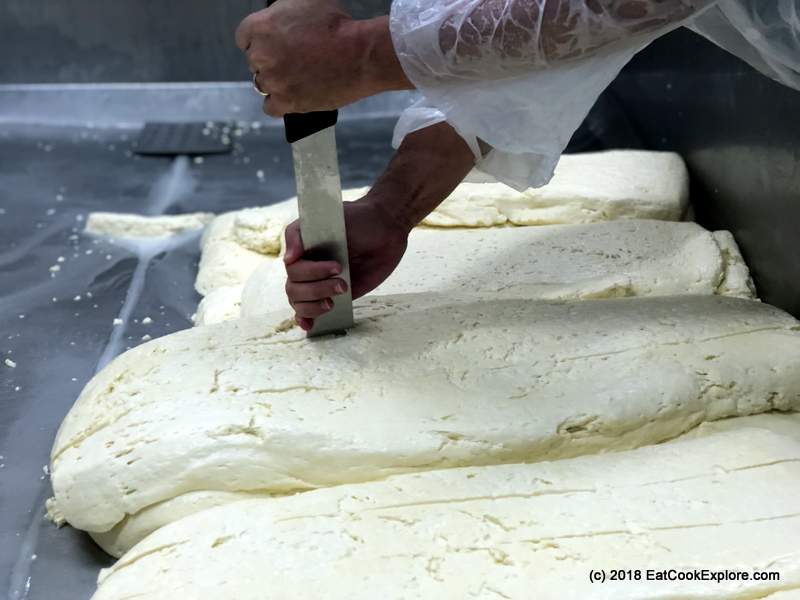
Next, the consolidated curd is sliced by hand into strips using long-bladed knives, harder than it looks. These strips are then fed through a mill that breaks them into thumbnail-sized pieces, which are then salted and mixed thoroughly.

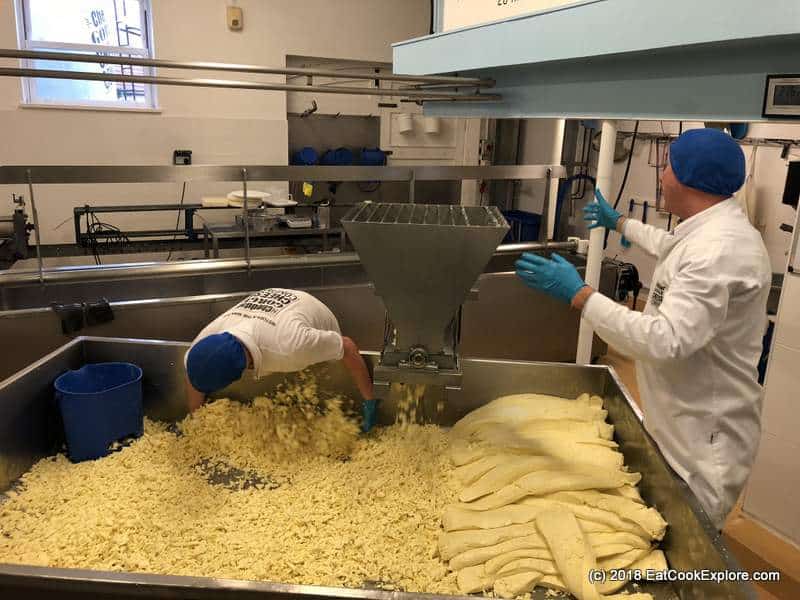

The mixture goes into cylindrical moulds and is pressed under tremendous weight to expel the last of the moisture and bind the pieces into a solid wheel.
Finally, each wheel is wrapped in traditional cheesecloth and moved to the maturing rooms, or, for their premium cheese, into Cheddar Gorge’s caves themselves.

The Magic of Cave Maturation

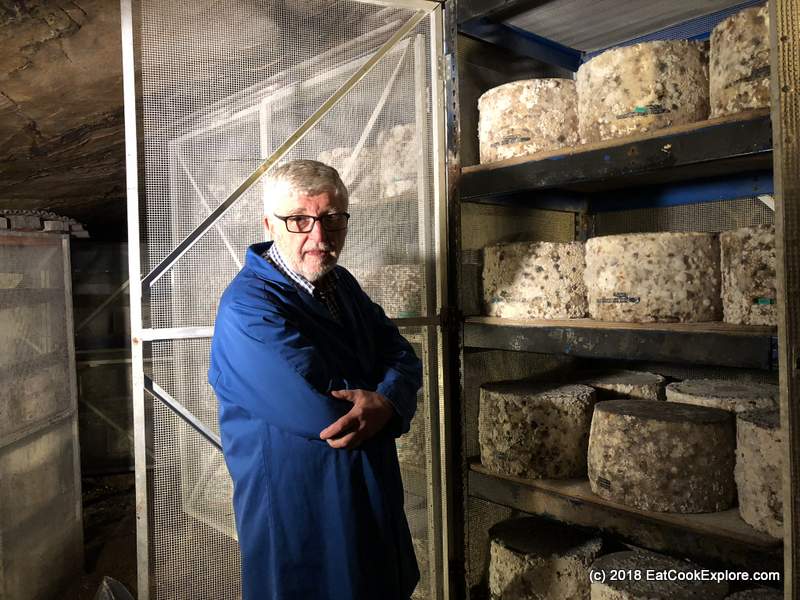
The Cheddar Gorge Cheese Company ages some of their production in the very caves that gave Cheddar its name. The caves maintain a constant temperature of around 11°C (52°F) year-round, with near-perfect 100% humidity. These conditions allow the cheese to mature slowly and evenly, developing complex flavours that younger cheese can’t match.


Cheddar Cheese tasting
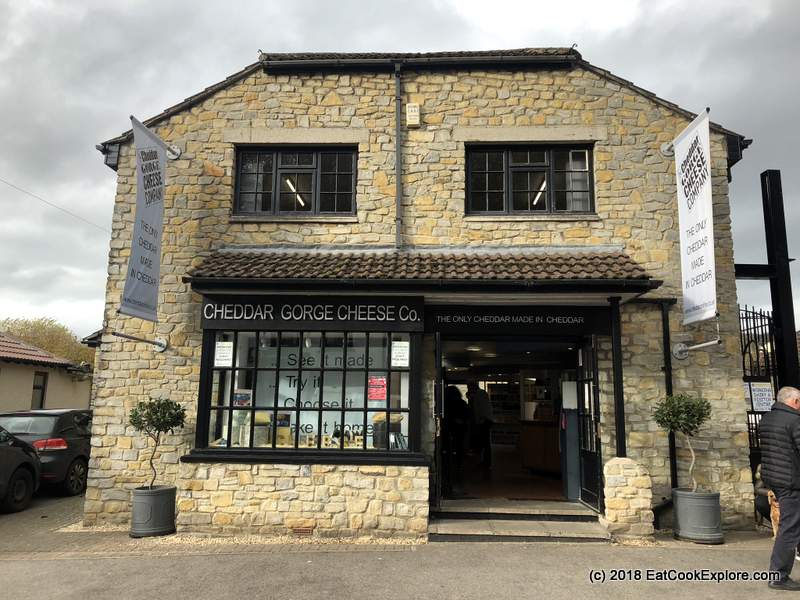
Cheddar Cheese tasting is offered by the Cheddar Cheese company at their shop. Their modest factory sits behind a shop in the village centre, where visitors can watch the entire cheesemaking process through large viewing windows. This isn’t a corporate operation, it’s a working dairy producing award-winning cheeses using methods that would be recognisable to Victorian cheesemakers.
During a tasting comparing identical batches aged in the cave versus their temperature-controlled rooms, the difference is striking. The cave-matured Cheddar has greater depth, more nuanced flavours, and a crystalline texture that signals proper ageing. It’s a tangible connection to centuries of tradition, this is how Cheddar was meant to taste.


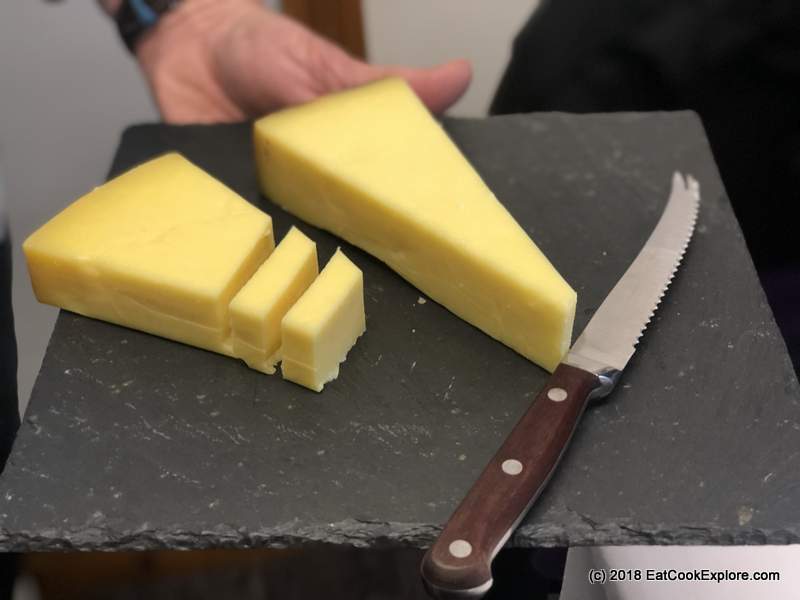
Beyond Traditional: Creative Variations

While traditional cloth-bound Cheddar remains their flagship, the Cheddar Gorge Cheese Company produces several other variations. Their Oak Smoked Cheddar adds a gentle smokiness using liquid smoke infusion. Most interesting is their Blue Cheddar, originally created by accident when some wheels developed blue veining during maturation. Rather than discarding them, they tasted the result and found it delicious. It’s a mild blue cheese with Cheddar’s firm texture, now one of their bestsellers.
Don’t leave without buying some of their cheese straws, crisp, buttery, and intensely cheesy, they’re addictive and make excellent gifts.
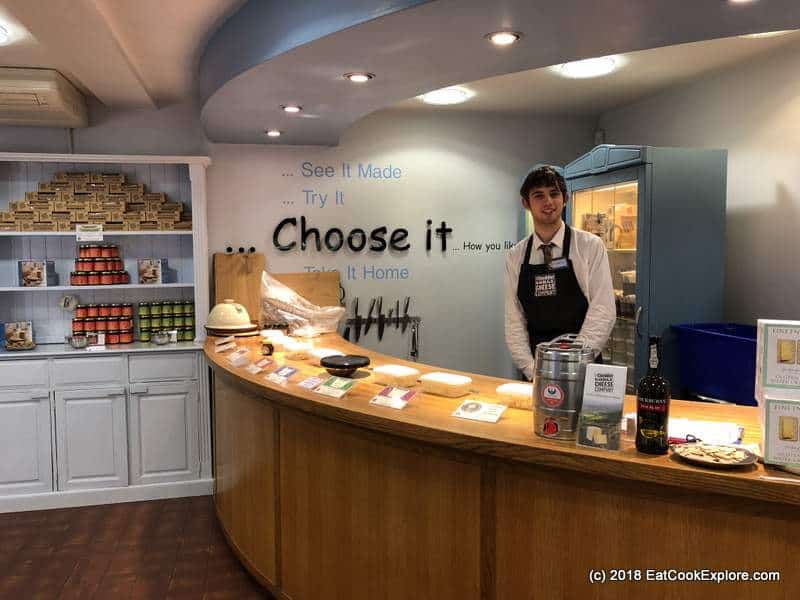
How to store cheese properly
If you buy more cheese than you can immediately finish, proper storage is essential. Wrap Cheddar or any cheese in greaseproof or wax paper (never cling film, which makes it sweat) or those new reusable beeswax wrappers, and store it in your fridge’s vegetable drawer where temperature fluctuations are minimal. Clingfilm traps moisture and encourages unwanted mould, while leaving cheese unwrapped dries it out. Cheddar also freezes well if grated first, ready for cheese toasties or gratins.
You can order the Cheddar Gorge Cheese Company artisan Cheddar online at their website. Here are some of the best products, including special festive hampers.
But nothing compares to buying it fresh from the shop, still cool from the caves, and enjoying it with the limestone cliffs rising behind you. That’s the taste of Cheddar as it was always meant to be.
Other things to do around Cheddar Gorge
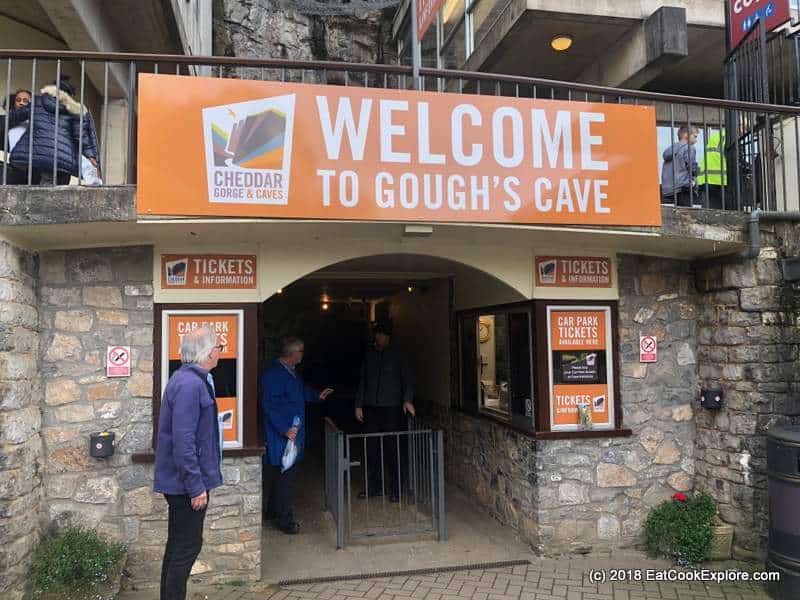
Read about things to see and do in and around Cheddar Gorge.
- Visit the Cheddar Gorge Caves and see Cheddar Man
- Hike around the nearby cliffs
- Take a walk on the Strawberry Line
- Tour both Cheddar Gorge and Glastonbury
- Walk or cycle the Cheddar Reservoir
EatCookExplore was a guest of the Cheddar Gorge Cheese Company


